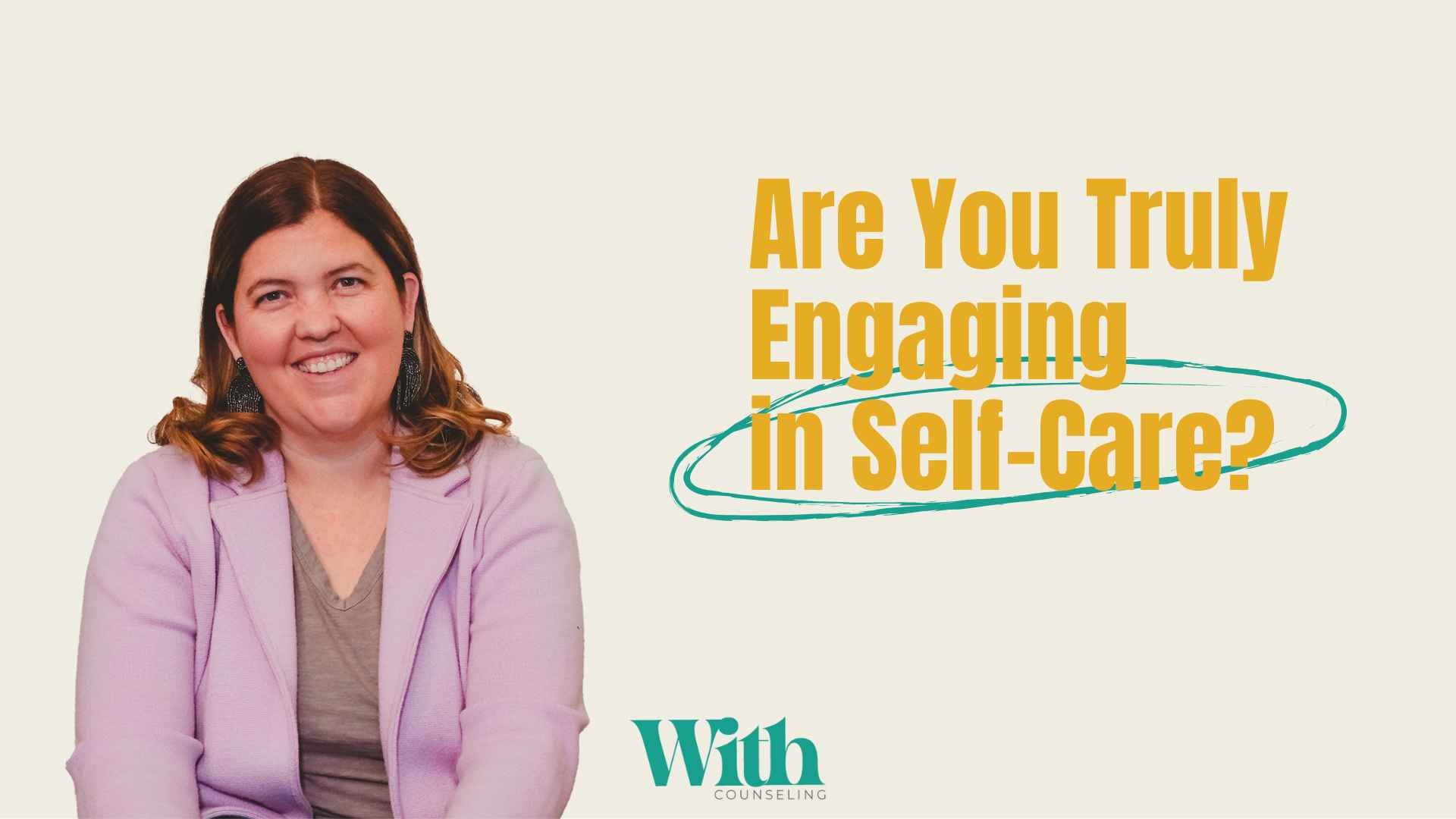
Self-care is a widely used term, often associated with spa days, shopping sprees, or treating yourself to indulgent experiences. But are those activities actually life-giving, or do they just check a box in our minds? In a recent episode of the With Counseling podcast, JJ Blanford, therapist and founder of With Counseling, and Currey explore what self-care really means and how we can ensure that we are engaging in activities that truly restore and nourish us.
Reframing Self-Care: What is Life-Giving?
Rather than using the term “self-care,” JJ encourages clients to ask themselves: What is life-giving to me? This small shift in language helps reframe the concept from a generic checklist to something deeply personal and meaningful.
Many of the typical self-care recommendations—taking a bath, getting a manicure, or going shopping—may not actually contribute to emotional and mental well-being. For some, a spa visit may be restorative, while for others, the noise and stimulation could be overwhelming. True self-care isn’t about following a prescribed list of activities but about discovering what genuinely replenishes your energy and well-being.
Beyond the Buzzwords: Identifying What Works for You
One of the biggest challenges in self-care is identifying activities that are actually beneficial. JJ suggests an important litmus test: After I finish this activity, do I feel better? Do I feel more like myself? Do I feel more full of life? If the answer is no, it may be time to reassess whether that activity qualifies as self-care for you.
It’s also essential to expand our perspective beyond costly or time-consuming activities. Life-giving experiences can be as simple as:
- Enjoying a hot cup of coffee while reading a book
- Taking a short walk outside
- Engaging in a favorite hobby
- Playing basketball at the gym
- Having a heartfelt conversation with a friend
Self-care also varies between solo and social activities. Some people find life-giving experiences in solitude, while others thrive on connection. Finding the right balance is key.
Recognizing When You Need Self-Care
How do you know when it’s time to engage in self-care? JJ points to strong emotions as a key indicator. Increased irritability, unexplained sadness, or even emotional numbness can signal a need to step back and replenish.
When these moments arise, it’s helpful to have a go-to list of self-care activities. Many people struggle to come up with solutions in times of stress, so having two to three reliable, life-giving activities on hand can make it easier to take action when needed.
Giving Yourself Permission
One of the biggest barriers to self-care is feeling like we need external permission to take time for ourselves. JJ jokes about the idea of handing out “adult permission slips” as a reminder that we are allowed to prioritize our well-being. Even in the most supportive relationships, others may not always recognize when we need to step away and recharge. It’s up to us to acknowledge our needs and take action.
Carrying Self-Care Into Changing Seasons
With the transition into fall and the upcoming holiday season, routines tend to shift. Whether or not you have school-aged children, seasonal changes bring new demands. Taking time to recognize what life-giving habits currently serve you can help ensure they don’t get lost in the shuffle.
JJ encourages listeners to take a few minutes to reflect on their self-care practices: What activities give me life? What can I carry into the next season? Identifying and committing to these practices can help maintain balance and well-being in the midst of changing schedules.
Your Self-Care Homework
Currey suggests a simple exercise: Take five to ten minutes to write down a few life-giving activities that you can turn to when needed. Whether it’s a coffee date with a friend, a quiet morning ritual, or an outdoor activity, being intentional about recognizing these moments can help ensure that self-care becomes a meaningful and consistent practice in your life.
